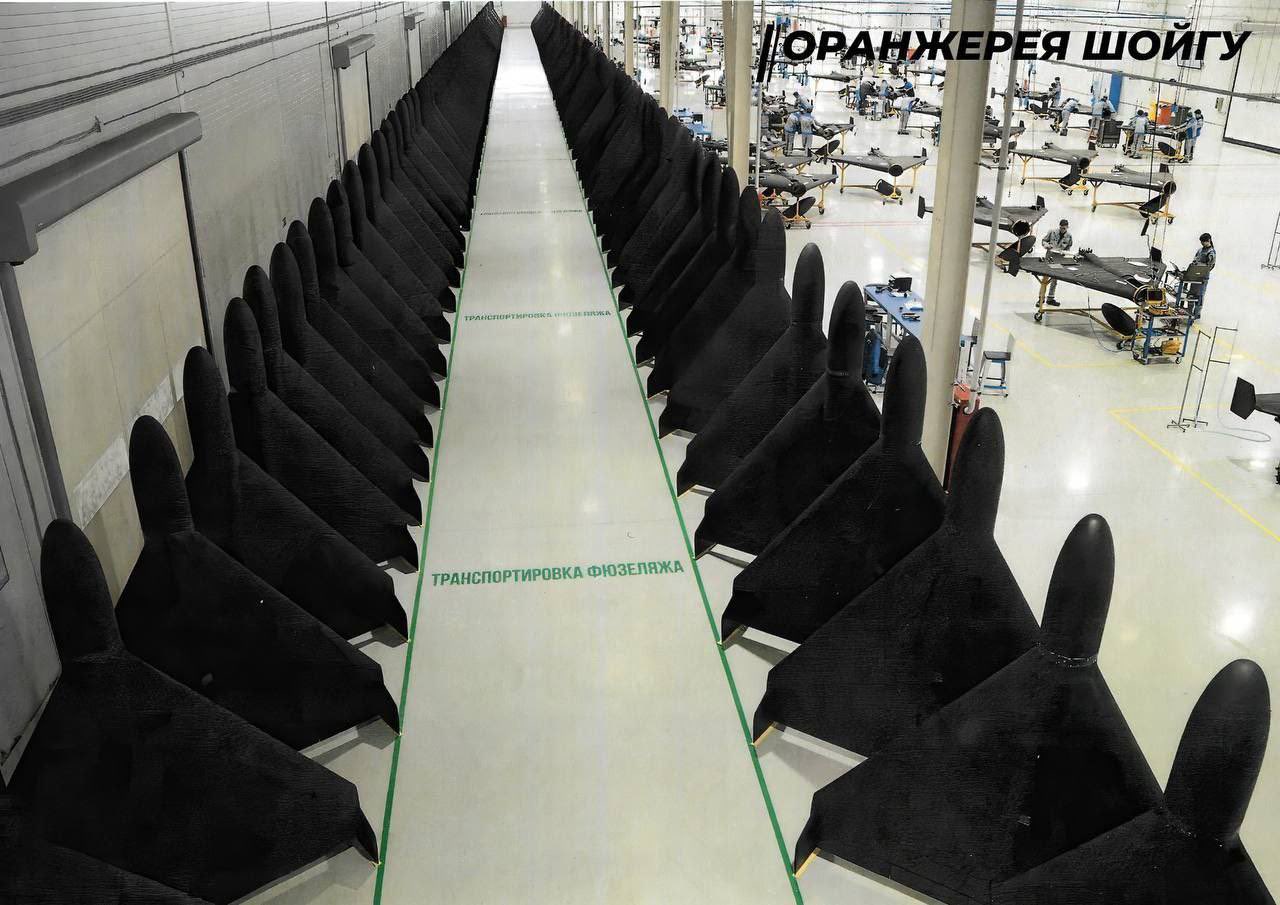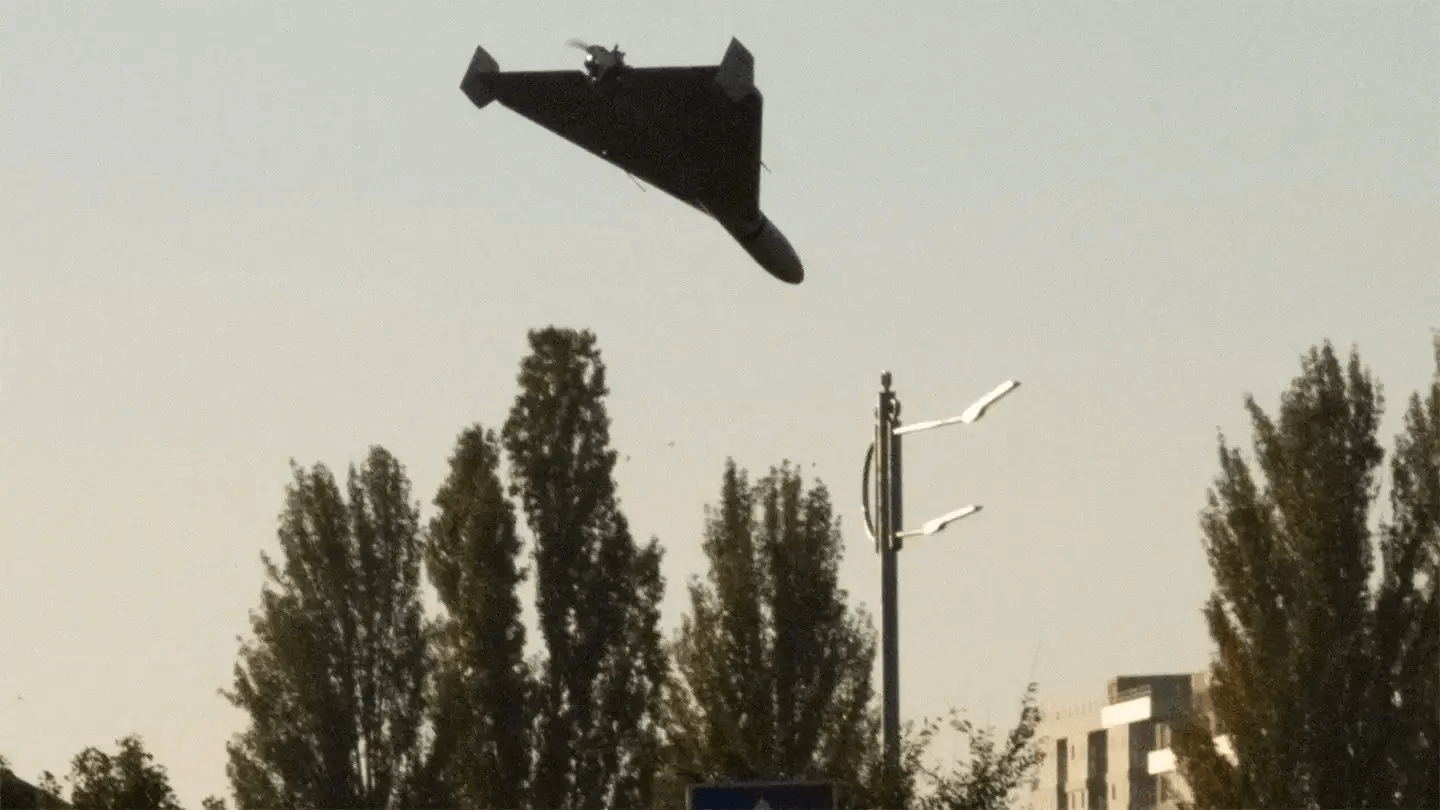As Russia continues to unleash swarms of Shahed-class kamikaze drones on Ukrainian targets, a video has surfaced showing the inside of a production unit that manufactures the license-produced Shahed suicide drones, called Geranium or Geran, in Russia.
Originally shared on Russian and Ukrainian Telegram channels, the video was also published on Platform X (previously Twitter) with claims that it was mass producing the Iran-origin Shahed drones to unleash them on Ukraine.
The 17-second video footage purportedly shows the factory that is said to have been established in Yelabuga, in the Tatarstan area of southeast Russia.
Some sources claimed in August 2023 that a massive Russian manufacturing site was being used for Shahed drone production. At that time, it was speculated that the facility was tasked with producing more than 1,600 Shaheds per month. However, no confirmation came from either Russian or Iranian authorities.
The latest video, however, comes months after the satellite images revealed that a factory was being constricted at Yelabuga for the license production of Shahed-class drones.
Additionally, it was noted that the construction activity at the plant “directly” matched a leaked floor plan of the structure that the Washington Post had provided earlier that year.
The existence of such a facility has been a topic of conversation among military observers and war trackers for several months now. However, the footage provides the first confirmation and the first look into the scale of production taking place at this production unit.
What Do We See At The Shahed Factory?
The video features large assembly lines, signaling that dozens of Geran drones are taking shape. About a hundred Shahed UAVs are visible, and in one still, laborers can be seen fitting engines and other parts.
In the video, it is possible to distinguish Russian-made Shahed-136s from Iranian ones because their wings have the Cyrillic word Geran. The drones are visibly large and are seen with vertical stabilizers above and below their wingtips.
Footage released of a Geran-2 (Shahed-136) factory in Russia
Note the large scale of production, as well as both night & day versions in black & white
The Russian domestic production cost is ~$48k, however as scale of production increases this number will go down pic.twitter.com/yQo11gmbQJ
— Iran Defense|نیروهای مسلح جمهوری اسلامی ایران (@IranDefense) March 5, 2024
Although Russia has used two distinctive variants of the Shahed-class drones, the Shahed-131 and the Shahed-136, the latter has found more popularity and utility with the Russian forces due to its longer range.
The footage and visible assembly lines clearly show that Russia is focusing on mass-producing the longer-range Shahed-136, which has a range exceeding 1,000 kilometers and can strike deep behind the frontline.
Drone airframes are visible in two different colors: a light gray tone on some and a dark gray-charcoal tone on others. The dark scheme, which is also visible on Shaheds made in Iran, is believed to be ideal for night operations, reducing its visibility.

The drone onslaught carried out on Ukrainian energy infrastructure in 2022 was largely done with the cover of darkness. The wreckage of these darker Shaheds shot down by Ukrainian air defenses has led experts to believe that they made use of some unknown radar-defeating coating or substance to evade enemy radars.
In the video and photographs published online, the Shahed also features a distinct composite structure, which allegedly helps with mass production and may also help reduce the aircraft’s signature, which is an enhancement that has happened under Russian production. This was pointed out by military expert John Hardie who extensively writes on the Russian military.
Footage inside Russia’s Shahed factory in Alabuga.
Note the distinct texture on the UAVs in the second photo. Possibly made using the different material highlighted below.https://t.co/LFOagBFkee https://t.co/Azfz55Hftx pic.twitter.com/PAEGPj1F6g
— John Hardie (@JohnH105) March 5, 2024
Hardie had first brought attention to this special coating in December last year. At that time, he had said, “While some previous Shaheds appeared to be simply painted black, this UAV’s fuselage used a ‘completely different material’— a dense foam covered by a black fiberglass-like material.” EurAsian Times could not independently verify these claims.
Since the footage features the drone still on the assembly line, it is not likely equipped with any avionics or warheads. The recording must have been done sometime before it could be deployed in combat.
According to earlier reports, Russia had opened the drone assembly plant in Tatarstan by April 2023, but Iranian components were the only ones used during the earliest stages of production. However, Russia is believed to be transitioning to locally-produced components, and a full transition is expected to be made by 2025.
The Shaheds Are Coming For Ukraine
Some military experts said the Shahed’s body shells are the easiest to mass produce. Still, everything else, including the engine and the electronics, is more intricate and difficult to source especially since Russia remains under crippling international sanctions.
The Shaheds, like many other Russian weapons, are largely dependent on foreign electronics. A recent report revealed that these parts were coming from third countries, some of which were unaware of such a delivery. However, with this out in the open now, experts believe that it would become tougher for Moscow to secure these crucial electronic parts.

Nevertheless, the large number of drones in the assembly spells impending danger for Ukraine. While Ukrainian intelligence has said that Russia can produce between 300 and 350 Shaheds per month which is consistent with the volume of strikes observed, some pro-Russian military bloggers believe the production will soon climb between 1,500 to 2,000 units per month.
Besides the number of drones unleashed on Ukraine, a bigger concern is the widening capability accrued by the drone with newer upgrades.
Since the introduction of the updated Shahed airframes during Russia’s war in Ukraine in October 2022, several noteworthy upgrades have been made.
These upgrades have been attributed to local assembly in this production unit using localized components like SIM cards or new warheads not typical of Iranian Shaheds.
There have been hints that Russia may have started attacking targets in Ukraine with jet-powered Shahed-238 drones manufactured in Iran, which were tougher to neutralize than the Shahed-136. This has turned into a problem since Russia has not reduced the use of these drones, unleashing them from Crimea and other regions in recent days.
- Contact the author at sakshi.tiwari9555 (at) gmail.com
- Follow EurAsian Times on Google News




